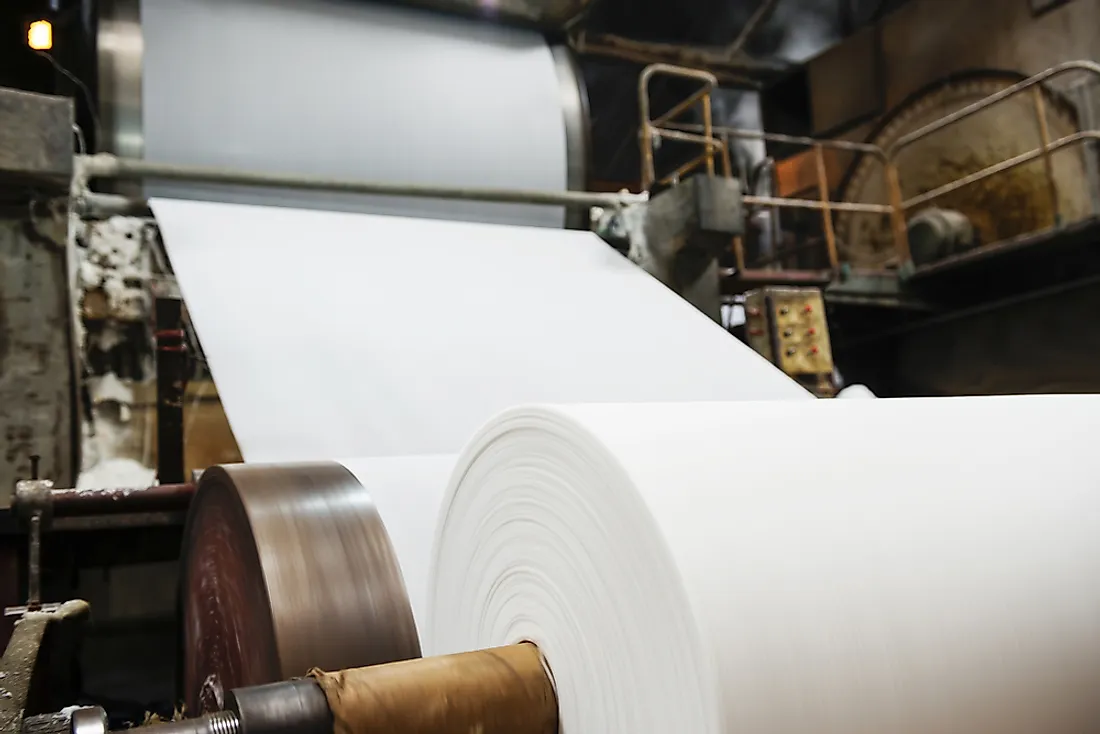How Many Trees Does It Take To Make 1 Ton Of Paper?

Paper is arguably one of the most important items that human society has ever invented as it contributed significantly to later technological advancements. In the process of making paper, trees are the most critical raw materials. It is estimated that 24 trees to make 1 ton of standard office paper.
History of Paper Making
Historical evidence indicates that the Chinese were the first society to develop a method to make pulp. Archaeologists indicate that the most ancient pieces of paper ever collected were from China from the 2nd century BCE. One of the people credited with the development of papermaking in China was Cai Lun, a eunuch in the court of the Han Dynasty. Although the process of making paper traces its roots to the Chinese, it was refined by Islamic societies who came up with machines to make vast amounts of paper. Today, China and the United States are the largest pulp and paper producers in the world.
Trees and the Production of Paper
The paper and pulp industry utilizes a variety of industrial processes to turn its natural resources (namely wood pulp) into consumer-grade commodities. There are two main methods of producing paper; a manual process, and a machine dependent process. Regardless of the process used in the manufacturing of the paper, the pulp is an essential component. In the making of pulp, a significant number of trees are cut down. The main consideration in determining the number of trees that are cut down is whether the pulp mill relies on a chemical or a mechanical pulping process. Industry experts indicate that while using the chemical pulping to produce 1 ton of printing paper approximately 24 trees are required. The 24 trees would have to be a combination of softwoods and hardwoods each about 40 feet tall with a diameter of roughly 6-8 inches. It is believed that the chemical pulping process, often referred to as the Kraft pulping process, is highly inefficient due to a large number of trees used in making a ton of paper. The mechanical pulping process is exceptionally more efficient than the Kraft pulping process since it uses fewer trees to make one ton of paper. The mechanical pulping process utilizes 12 trees which are a mixture of hardwood and softwood.
The Environmental Impact of Paper
The papermaking process has been criticized extensively by environmentalists since it contributes to pollution. Papermaking has an impact on the environment because it destroys trees in the process. According to data from the Global Forest Resource Assessment roughly 80,000 to 160,000 trees are cut down each day around the world with a significant percentage being used in the paper industry. The major impact of the constant deforestation is the change in global climatic patterns. Apart from deforestation, the paper manufacturing industry also contributes to air pollution. In the United States, paper industries accounted for roughly 20% of the air pollution in 2015. Paper manufacturing also contributes significantly to water pollution. In 2015, the Canadian government estimated that the nation's paper industry accounted for 5% of the waste disposed into the nation's waterways. Data indicates that the production of 1 ton of paper contaminates nearly 20,000 gallons of water.
Importance of Recycled Paper
Recycled paper was created to reduce the environmental impact of paper manufacturing. Paper can be recycled about 5 to 7 times. Data indicates that using one ton of recycled paper can prevent 17 trees from being cut down.











